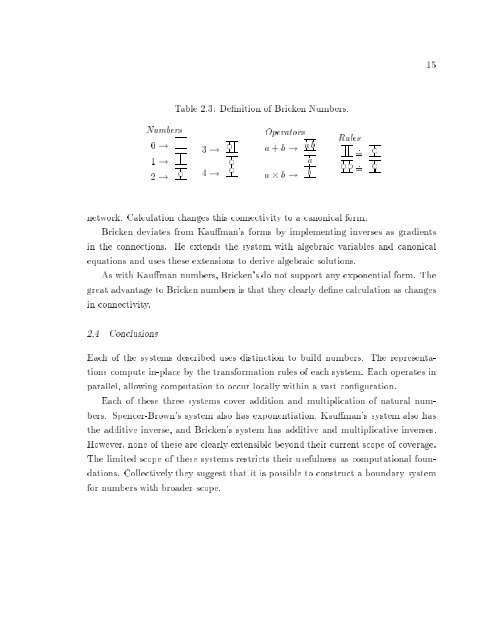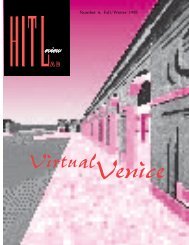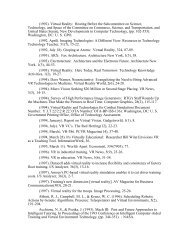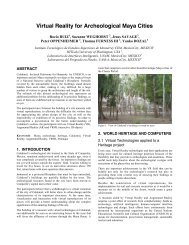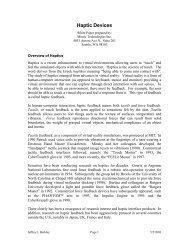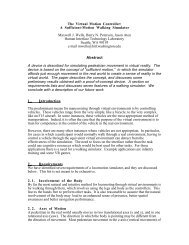A Calculus of Number Based on Spatial Forms - University of ...
A Calculus of Number Based on Spatial Forms - University of ...
A Calculus of Number Based on Spatial Forms - University of ...
You also want an ePaper? Increase the reach of your titles
YUMPU automatically turns print PDFs into web optimized ePapers that Google loves.
15<br />
Table 2.3: Deniti<strong>on</strong> <str<strong>on</strong>g>of</str<strong>on</strong>g> Bricken <str<strong>on</strong>g>Number</str<strong>on</strong>g>s.<br />
<str<strong>on</strong>g>Number</str<strong>on</strong>g>s<br />
0 !<br />
e<br />
1 !<br />
2 !<br />
3 !<br />
e<br />
4 !<br />
e<br />
Operators<br />
a + b ! a b<br />
a<br />
a b ! b<br />
Rules<br />
ee<br />
:<br />
e<br />
=<br />
: =<br />
network. Calculati<strong>on</strong> changes this c<strong>on</strong>nectivity to a can<strong>on</strong>ical form.<br />
Bricken deviates from Kauman's forms by implementing inverses as gradients<br />
in the c<strong>on</strong>necti<strong>on</strong>s. He extends the system with algebraic variables and can<strong>on</strong>ical<br />
equati<strong>on</strong>s and uses these extensi<strong>on</strong>s to derive algebraic soluti<strong>on</strong>s.<br />
As with Kauman numbers, Bricken's do not support any exp<strong>on</strong>ential form. The<br />
great advantage to Bricken numbers is that they clearly dene calculati<strong>on</strong> as changes<br />
in c<strong>on</strong>nectivity.<br />
2.4 C<strong>on</strong>clusi<strong>on</strong>s<br />
Each <str<strong>on</strong>g>of</str<strong>on</strong>g> the systems described uses distincti<strong>on</strong> to build numbers. The representati<strong>on</strong>s<br />
compute in-place by the transformati<strong>on</strong> rules <str<strong>on</strong>g>of</str<strong>on</strong>g> each system. Each operates in<br />
parallel, allowing computati<strong>on</strong> to occur locally within a vast c<strong>on</strong>gurati<strong>on</strong>.<br />
Each <str<strong>on</strong>g>of</str<strong>on</strong>g> these three systems cover additi<strong>on</strong> and multiplicati<strong>on</strong> <str<strong>on</strong>g>of</str<strong>on</strong>g> natural numbers.<br />
Spencer-Brown's system also has exp<strong>on</strong>entiati<strong>on</strong>, Kauman's system also has<br />
the additive inverse, and Bricken's system has additive and multiplicative inverses.<br />
However, n<strong>on</strong>e <str<strong>on</strong>g>of</str<strong>on</strong>g> these are clearly extensible bey<strong>on</strong>d their current scope <str<strong>on</strong>g>of</str<strong>on</strong>g> coverage.<br />
The limited scope <str<strong>on</strong>g>of</str<strong>on</strong>g> these systems restricts their usefulness as computati<strong>on</strong>al foundati<strong>on</strong>s.<br />
Collectively they suggest that it is possible to c<strong>on</strong>struct a boundary system<br />
for numbers with broader scope.


